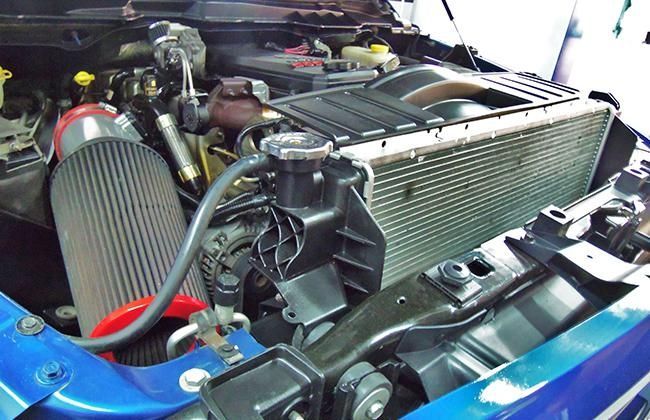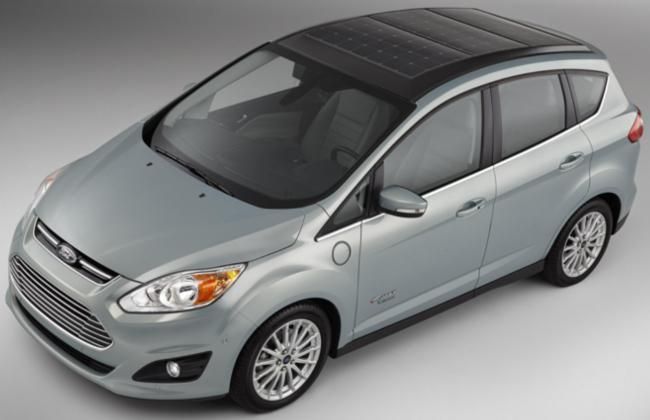Technical Aspects: Engine Cooling System (Indirect Liquid Cooling)
Modified On Apr 05, 2016 03:02 PM By Sahib
- Write a comment

Indirect engine cooling system doesn’t allow air to directly contact with the surface of engine. It indirectly cools down the engine and its components with the help of a coolant circulating in coolant jackets around the cylinder block and the cylinder head. While circulating around cylinders, coolant takes away most of the heat content with it. This heat is further dissipated to the air stream passing through radiators.
Background/Development:
- The radiator was invented and patented by Karl Benz in 1885.
- The first honeycomb radiator was designed by Wilhelm Maybach and fitted to the 1901 Mercedes 35 HP model.
- Ethylene glycol was first proposed as an engine coolant in England in 1916 to lower the freezing point of water in car cooling systems.
Technical facts:
The basic indirect liquid cooling system comprises of coolant/water pump, radiator, radiator pressure cap, expansion tank, cooling fan and thermostat. These components perform together efficiently to cool down the engine. Other technical insights are discussed below:

1. Radiator:
A radiator is a type of heat exchanger which transfers heat from the hot coolant that flows through it to the air. It consists of upper tank and lower tank, connected by large number of tubes (mesh/core structure). Coolant is pumped from the engine to the upper tank. As it flows down through the tubes, heat from coolant is dissipate to the air stream which passes around the outside of the tubes.

It may be a down flow type radiator (coolant flows from top tank to bottom tank), cross flow type radiator (coolant flows from left to right) or double cross flow type radiator (coolant flows down one half-side of tubes, then takes a U-turn, and back up the other half-side).
2. Radiator Pressure Cap:
Radaitor pressure cap is located at the top of radiator. This cap increases the boiling point of coolant by not allowing the pressure to escape, otherwise coolant would boil under such extreme temperature conditions. There is a preset rating of the cap that indicates the highest coolant pressure it can handle.

If the pressure in cooling system exceeds this preset value, pressure valve (relief valve) opens and the coolant escapes through overflow tube to expansion tank. Now as the pressure reduces, pressure valve closes. Reduction in coolant pressure creates a vacuum in the cooling system that pulls the additional vacuum valve and opens it, and hence allows coolant to return to the radiator.
3. Expansion Tank:
The expansion tank is located within the engine compartment. It is connected to radiator by overflow hose. It indicates whether the radiator is full or not, and hence ensures a sufficient supply of coolant in the system and allows expansion of the coolant as the temperature rises.

4. Cooling Fan:
It is usually located behind the radiator. Generally the cooling fans are driven by the engine crank shaft through a belt. Now-a-days the cooling fan is operated electrically or through a viscous coupling, so that there is less load on the engine.

5. Coolant/Water Pump:
The pump circulates the coolant under pressure by utilizing the power from engine with the help of a v-belt. There are curved vanes across the center of the disc (impeller). This pump functions on the principle of the centrifugal force. It has an inlet at the center and an outlet at the circumference of the pump casing.

6. Thermostat:
A thermostat valve is fitted on the engine. This valve allows engine to heat up quickly, so as to bring the engine to its working temperature. It regulates the amount of coolant that goes to the radiator.

At low temperature, thermostat is closed and coolant is not allowed to flow through radiator. The coolant only re-circulates through the engine. As the engine temperature rises, thermostat opens slowly and allows coolant to flow through the radiator, to bring the cooling system into action. In this way, thermostat controls engine temperature by continuously monitoring the coolant flow to the radiator.
Advantages of Indirect engine cooling :
- This system efficiently maintains the optimum working temperature range and hence allows smooth functioning of engine.
- Overall more efficient as compared to air cooled engine.
- There are lesser noise issues with this system as compared to air cooled engine.
Disadvantages of Indirect engine cooling :
- More complex and heavier system.
- Coolant leakage problems.
- High maintenance is required.
Also Read: Technical Aspects: Engine Cooling System (Direct Air Cooling)
1 out of 1 found this helpful










